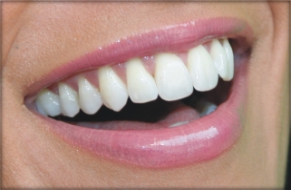|

Gum treatment/periodontal treatment
Gum diseases are treated in a variety of ways depending on the stage
of disease, how you may have responded to earlier treatments, and your
overall health.
Treatments range from non-surgical therapies
that control bacterial growth to surgery to restore supportive tissues.
Non-surgical
Treatments
- Professional
dental cleaning. During a typical checkup we will remove the plaque and
tartar (plaque that builds up and hardens on the tooth surface and can
only be removed with professional cleaning) from above and below the gum
line of all your teeth. If you have some signs of gum disease, we will
recommend professional dental cleaning more than twice-a-year.
- Scaling and root
planing. This is a deep-cleaning,
nonsurgical procedure, done under a local anesthetic, whereby plaque and
tartar from above and below the gum line are scraped away (scaling) and
rough spots on the tooth root are made smooth (planing). Smoothing the
rough spots removes bacteria and provides a clean surface for the gums
to reattach to the teeth. Scaling and root planing is done if we
determine that you have plaque and calculus (hardened plaque, also
called tartar) under the gums that needs to be removed.
Antiseptic mouthwash also
proves highly effective in gingivitis treatment by killing bacteria in the
mouth and on the surfaces of teeth. When on hand, it should be used
after every brushing and flossing. Combined with regular dental care, these
techniques will prove highly effective in the treatment of gingivitis.
It is important to remember that even
with the best gingivitis treatments
administered at home people still need to see a dentist once
every six months for checkups and teeth cleaning.

Different stages of gum
disease. Gingivitis is a reversible form
of gum disease and can easily return to healthy
conditions
following good oral hygiene scheme. The periodontitis
stage
is irreversible and requires a more professional cleaning
where the aim is concentrated on stopping the progression
of the disease.
|

